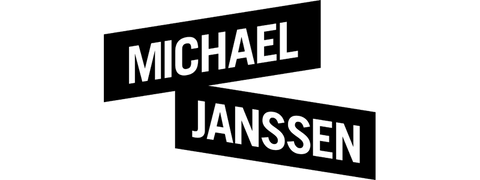ARTIST TALK
Jonathan Schmidt-Ott
In conversation with Anna-Lena Werner*
Saturday 12 January, 12 am
RSVP until 10 January: hanne@galeriemichaeljanssen.de
Galerie Michael Janssen is pleased to announce ~Vollmond, their first solo exhibition of works by Jonathan Schmidt-Ott. Opening in conjunction with this year’s penultimate full moon, ~Vollmond presents the artist’s most perennial works to date: large-scale photographs of horses in the French Basque countryside. The vernissage also marks the debut of his new book Se così fosse published by a+G, which spans nearly a decade of Schmidt-Ott’s artistic practice.
In 2009, Schmidt-Ott stood in a field near Biarritz with the ocean in his ear and a camera to his eye. A herd of horses filled the lens. The resulting photographs record an interspecies moment awakened to all the history and symbolism the horse now holds.
Six images are horizontally oriented to accommodate the equine bodies. A group shot of the herd is the most visually dense. It is a tense scene—as though thunder is about to break and with it a stampede. “For me this image stands for death,” Schmidt-Ott said in a 2013 interview with architect Johannes Schulze-Icking. Although his sentiment is
informed by early silent cinema—an era when startled horses indicated gunfire and, therefore, murder—his comment taps into a wider folklore linking the Equidae to grave misfortune. Recall Conquest, War, Famine, and Death in The Book of Revelation; or, more specifically, Act II of Macbeth, when Duncan’s horses become deranged after his stabbing.
The atmospheric tension in the photograph—which is also apparent in the other images in the cycle—is visually underscored by its severe compositional frame, one that cuts off the horses’ legs above the knee. Intentional or not, it is a bold choice made by the photographer, one that could obliquely allude to glue manufacturing. It is also a choice that places the image within a formalist (albeit informal) art historical category of horses suspended in space. Take, for example, Lascaux’s many depictions of the horse painted, as though floating, on a blank rock wall—paintings which are figure studies and motion studies and portraits of a creature to whom humans were always attuned. Or leap forward some 19,000 years and consider Eadweard Muybridge’s electro-photographic investigation into animal locomotion. Fascination for the horse perdures in his 1878 gait-analysis study, Sallie Gardner at a Gallop, wherein equine mechanics were scrutinized with split-second precision (the famous photographs proved a horse gains momentary flight when its hooves tuck under its body during a gallop).
~Vollmond contains one image formatted unlike the rest: a vertically-oriented portrait taken at close range with a flash. The light burst is reflected in the horse’s glassy eyes as a luminous glow. At first, the reflection appears white—an approximate moon—but closer inspection reveals the visible spectrum. Its iridescence stands for all the richness of human perception, as well as the limited scope of what we can perceive.
At its core, ~Vollmond celebrates our fascination with beasts. How do animals feel to the touch? How do they taste? How can we name them, and how are we different? These are but a few fundamental questions swirling in the conceptual background of the photographs. Dependency and survival complicate the issue, of course, as do questions regarding companionship and domestication, but they are factors belonging to the same prehistoric curiosity. They are meditations that are distinctly timeless.
Text: Patrick J. Reed. A previous version of this text appears unedited and unabridged in Se così fosse as “Precise/Approximate: Reflections on the Photography of Jonathan Schmidt-Ott.”
*Anna-Lena Werner is a researcher and curator. In her PhD she focused on contemporary aesthetic practices engaged in trauma and conflicts. In 2011 Anna-Lena founded the art magazine artfridge.de, which features interviews with international artists and curators. At the Archiv der Avantgarden she currently runs the research project "Invitations" – a collaboration between Staatliche Kunstsammlungen Dresden, Free University Berlin and Haus der Kulturen der Welt, Berlin. She contributes texts to several art magazines and regularly organises exhibition projects.

